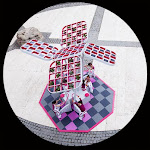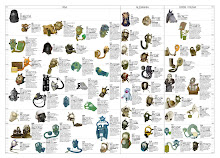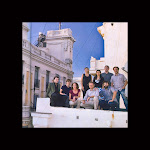::: Abstract :::
Uno de los retos a los que se enfrenta la energía solar fotovoltaica en nuestros días es la integración en los centros de las ciudades. Generalmente, las grandes infraestructuras PV han sido ubicadas fuera de los núcleos urbanos. Sin embargo, este paper pretende demostrar a partir del estudio de casos, cómo la aplicación de la PV integrada constituye una oportunidad, no sólo para implementar el rendimiento energético de las ciudades, sino también para hacer partícipe al ciudadano de los procesos de gestión de la energía. Las instalaciones de PV constituyen a la vez una infraestructura para la ciudad y un dispositivo de comunicación para el ciudadano.
One of the challenges that photovoltaic solar power currently faces is its integration within the city centre, since, in general, large PV infrastructures have always been located outside cities. The purpose of this paper is to present case studies to prove how integrated PV facilities provide a chance to not only improve the power performance of cities but also to allow citizen participation in the power management processes. PV facilities are both an urban infrastructure and a means of communication for citizens.
::: Innovación Científica y Relevancia :::
A través de la integración de la energía PV:
- Se construye un paisaje urbano híbrido que integra la tecnología con la naturaleza.
- Se re-activa el espacio público de nuestras ciudades.
- Se posibilita la participación del ciudadano en los procesos energéticos.
- Se explora la dimensión estética de la PV, potenciando que las smart technologies pasen a formar parte del imaginario colectivo.
- Se convierte el espacio público en un espacio productor de energía.
::: Scientific Innovation and relevance :::
The integration of PV power serves to:
- Build a hybrid urban landscape that integrates technology and nature
- Reactivate public spaces in our cities
- Allow citizen participation in the power management processes
- Explore the aesthetic dimension of PV power by introducing smart technologies into the collective imagery
- Transform public spaces into power generating spaces
::: Resultados :::
El proyecto Piloto de la Plaza del general Vara del Rey encargado por la Oficina Centro del Ayuntamiento de Madrid comprende los siguientes aspectos:
- Monitorización de la energía. La gestión de la energía es traducida a códigos de lectura para que el usuario tenga un acceso fácil y divertido a la información relativa al proceso de gestión de la energía (ej: el ciudadano sabe, en todo momento cuánto queda por pagar del presupuesto de ejecución de la plaza o cuál ha sido el rendimiento del día de los paneles).
- Escenario pedagógico. El espacio público productor se configura como un espacio para el aprendizaje de los procesos energéticos. El proyecto aprovecha la “visibilidad” de la infraestructura PV para explotar su capacidad comunicativa.
- Estudio económico. La plaza amortiza su propia inversión
* En 10 años la plaza ha amortizado la infraestructura PV.
* El presupuesto de ejecución material para la plaza descendería un 22,2% (en 10 años).
* A partir del undécimo año, la plaza empieza a generar beneficios, obteniendo unos ingresos anuales.
* En 30 años más del 60% del coste de ejecución material estará cubierto.
::: Results :::
The pilot project of the General Vara del Rey square, requested by the Oficina Centro of the Madrid Council, covers the following aspects:
- Power monitoring. The management of power is translated into reading codes to allow users easy and fun access to the information on the power management process (e.g. citizens would know, at all times, how much of the execution budget still remains to be paid or what the output of the panels has been on any given day)
- Pedagogical scenario. The public space for power generation is configured as a teaching ground regarding power generation processes. The project uses the ‘visibility’ of the PV infrastructure to exploit its communicative capabilities.
- Economic study. The square pays for its own investment.
* The square pays off the PV infrastructure in 10 years
* The physical execution budget for the square drops by 22.2% (in 10 years)
* From the 11th year onwards the square yields an average profit per year
* After 30 years, more than 60% of the physical execution cost will have been covered
::: Conclusiones :::
La Infraestructura PV integrada constituye un elemento configurador del espacio público y un dispositivo comunicativo.
::: Conclussions :::
The integrated PV infrastructure becomes part of the configuration of the public space and a communication device.
+ info:
25th EU PVSEC / WCPEC-5













![[inter]sección de Filosofía y Arquitectura](http://3.bp.blogspot.com/_Awsby2KXw-Y/S_f6NdsAPWI/AAAAAAAAAOU/0-uT7zcKiPM/S220/10-CARTEL+interseccion.jpg)

